
We’re accustomed to the concept of overclocking when it comes to CPUs and GPUs, but the Mobius 120 “OC” from Cooler Master introduces a new paradigm – overclocking of cooling fans! This is a first in the industry. The boosted Mobius 120 OC model boasts three speed settings, reaching up to 3200 ± 10% RPM, 88.1 CFM, and 4.75 mmH₂O. These specifications allow it to outperform the standard Mobius 120 in terms of heat dissipation, offering superior cooling capabilities.
Cooler Master Mobius 120 OC Fan Specifications:
Fan Size: 120 x 120 x 27 mm
Fan Max Speed: Low/Medium/High 1500/2400/3200 ± 10% RPM
Fan Max Air Flow: Low/Medium/High 42.2/65.5/88.1 CFM
Fan Pressure: Low/Medium/High 1.19/2.76/4.75 mmH₂O
Maximum Fan Noise Level: Low/Medium/High 17.4/31.1/39.3 dBA
Fan Bearing Type: Dual Ball Bearing
Fan MTBF: >200000 Hours
Connection Interfaces: 4- Pin PWM (with speed control wire)
Fan rated voltage: 12 VDC
Fan rated current: low/medium/high 0.10A/0.20A,/0.35A
Fan safety current: 0.5A
Warranty: 5 years
Cooler Master Mobius 120 OC fan out of the box
Cooler Master rolled out new iterations of their Mobius 120 and Mobius 120P ARGB series fans at the end of 2022. A few months later, they introduced an updated model, the star of the day, the “overclocked version” Mobius 120 OC. However, fan overclocking doesn’t mean enhancing pulse or frequency, but rather improving the heat dissipation capacity and specifications of the fan itself.
When compared to its predecessor, the overclocked version boasts a significant speed increase, jumping from 2050 to 3200 RPM. Additionally, the maximum air pressure and volume have been boosted from 2.69mmH2O/63.1 CFM to 4.5 mmH2O/88.1 CFM. The Mobius 120 OC also comes with a new feature – a three-stage fan speed switch.
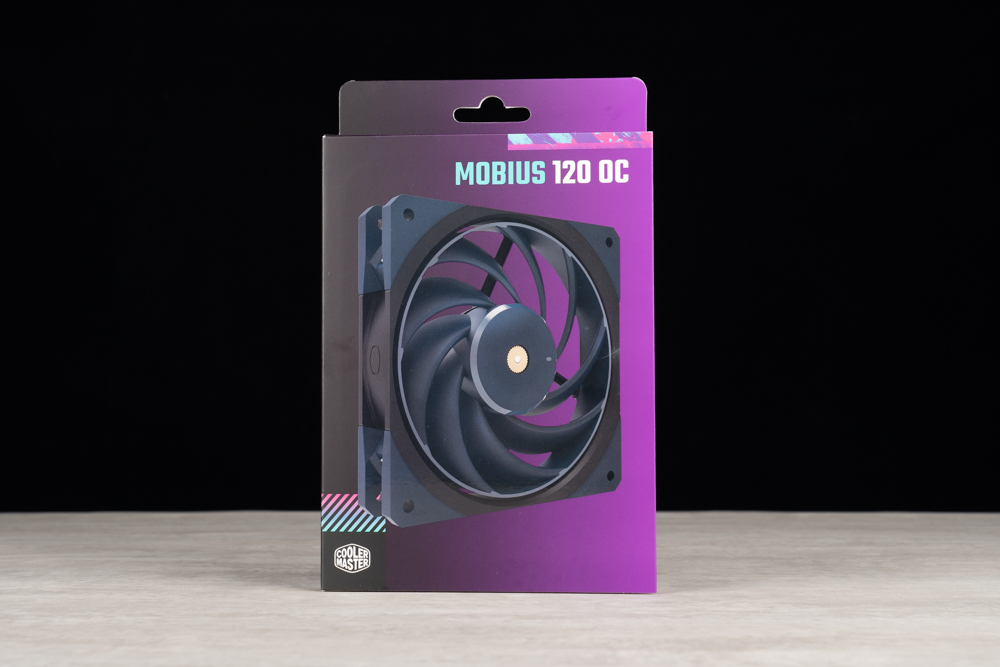
The fan’s packaging features a unique flip-open display window. Opening the concealed interlayer reveals not only the fundamental fan specifications but also diagrams of air pressure and volume across three modes. These three modes, which range from low to high, are Silence Cooling (L Mode), Performance (M Mode), and Extreme Performance (H Mode).
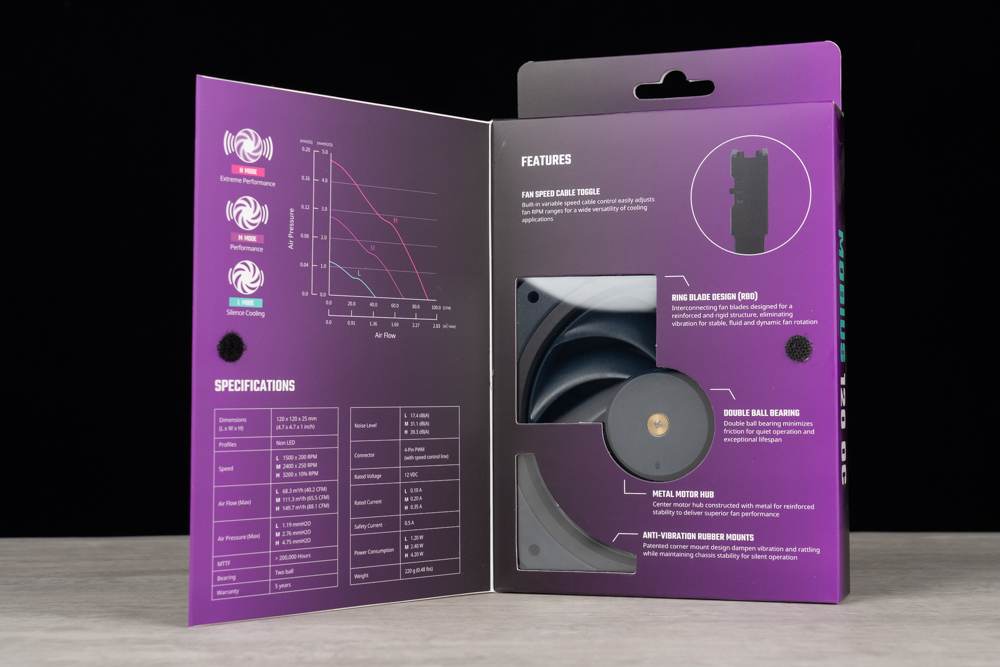
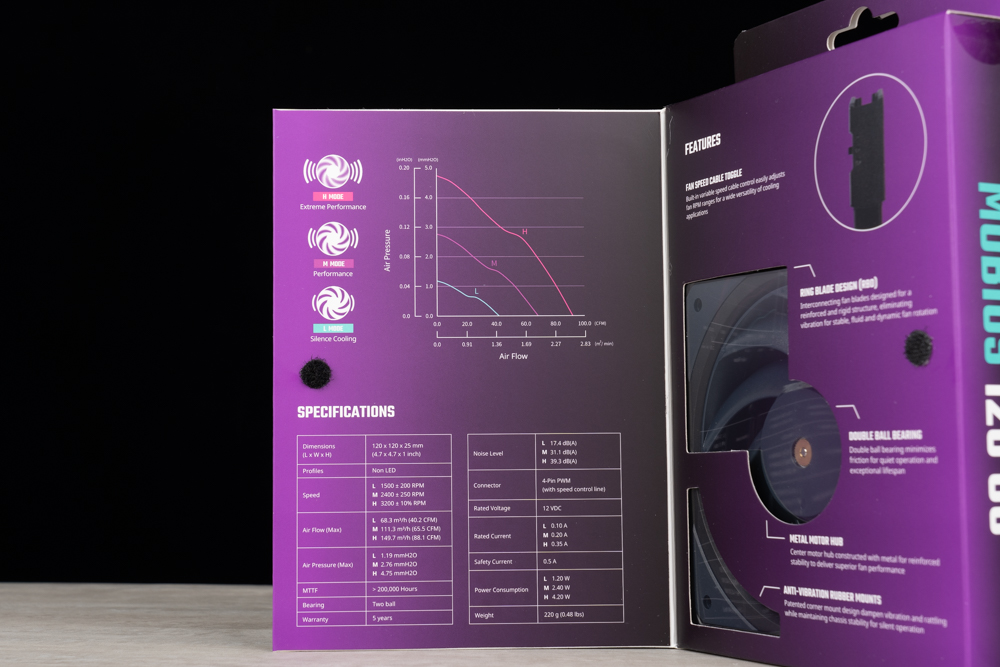
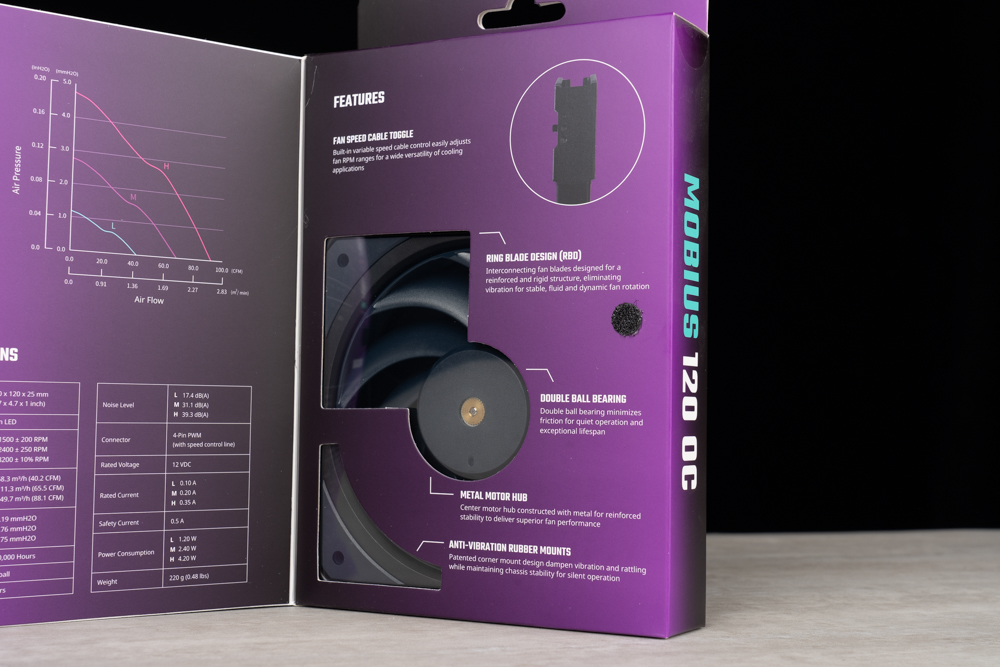
Currently, the focus is on the 12cm Mobius 120 OC fan, which is designed with versatility and practicality in mind. As a result, Cooler Master has not yet launched the 14cm size and ARGB versions of the Mobius OC fan. The dimensions of the fan body are 120x120x27mm. Owing to the pre-installed anti-vibration rubber bracket, the thickness increases by 1mm at the front and rear.
The Mobius 120 OC employs the Ring Blade Design (RBD), which connects nine fan blades to the outer ring frame. This design not only strengthens the physical structure but also enhances shock absorption and heat dissipation performance.
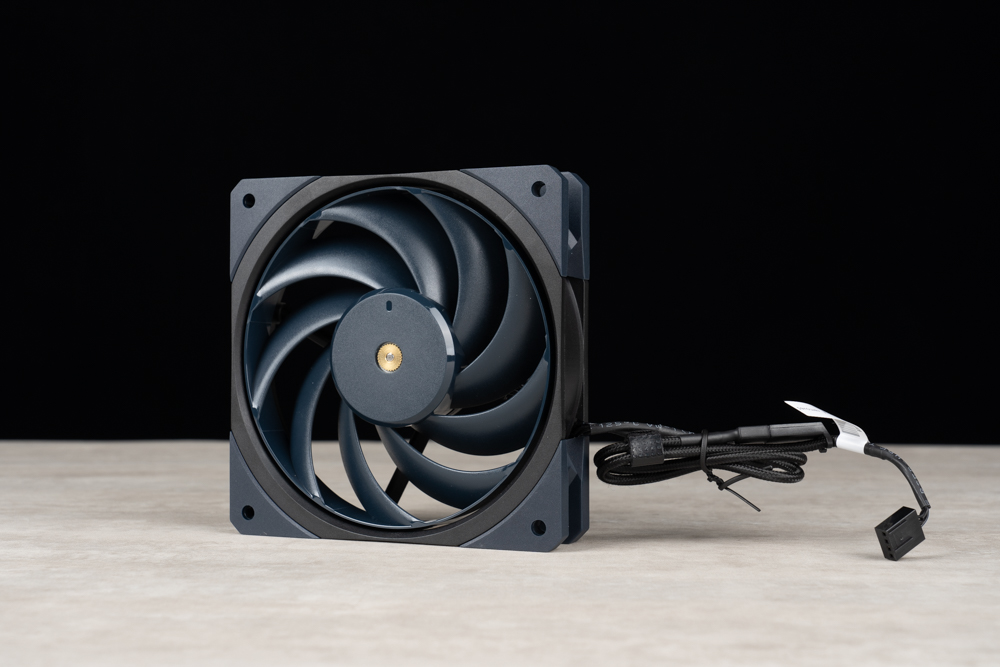
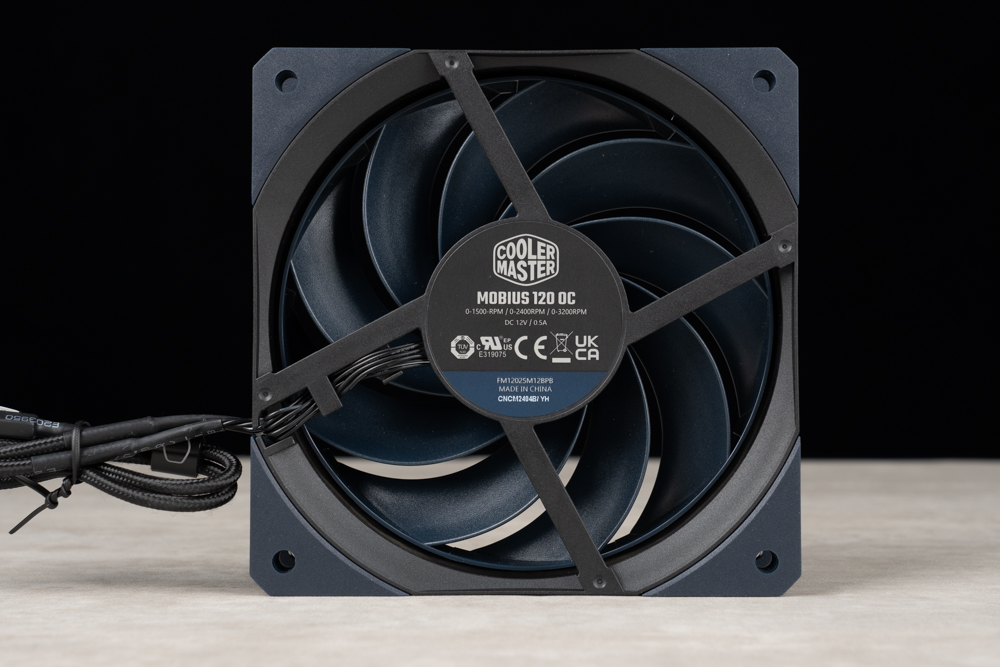
The fan shaft of the Mobius 120 OC incorporates double ball bearings housed in a metal bearing casing. This use of double ball bearings helps to minimize friction, which in turn extends the operational lifespan of the fan and reduces noise.
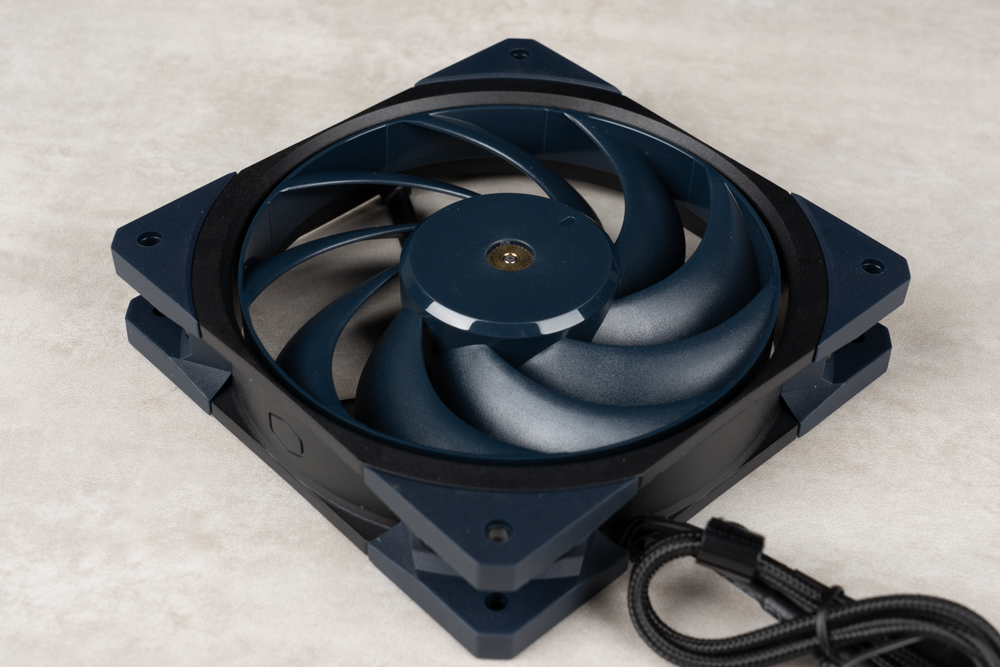
The Mobius 120 OC fan comes pre-installed with anti-vibration rubber brackets on all four sides. This patented design helps absorb vibrations, mitigating issues related to resonance with the computer case, reducing operating noise, and maintaining structural stability. Each side bracket is secured with two screws. It’s possible that Cooler Master may release different colors of these brackets in the future, allowing users to mix and match to customize their Cooler Master Mobius 120 OC for a more personalized look.
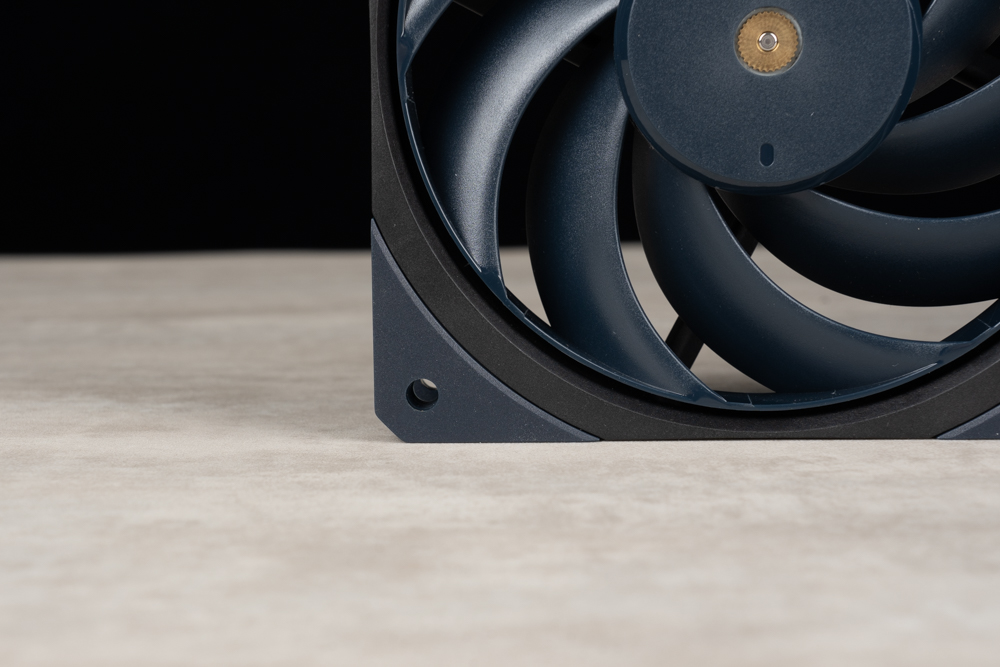
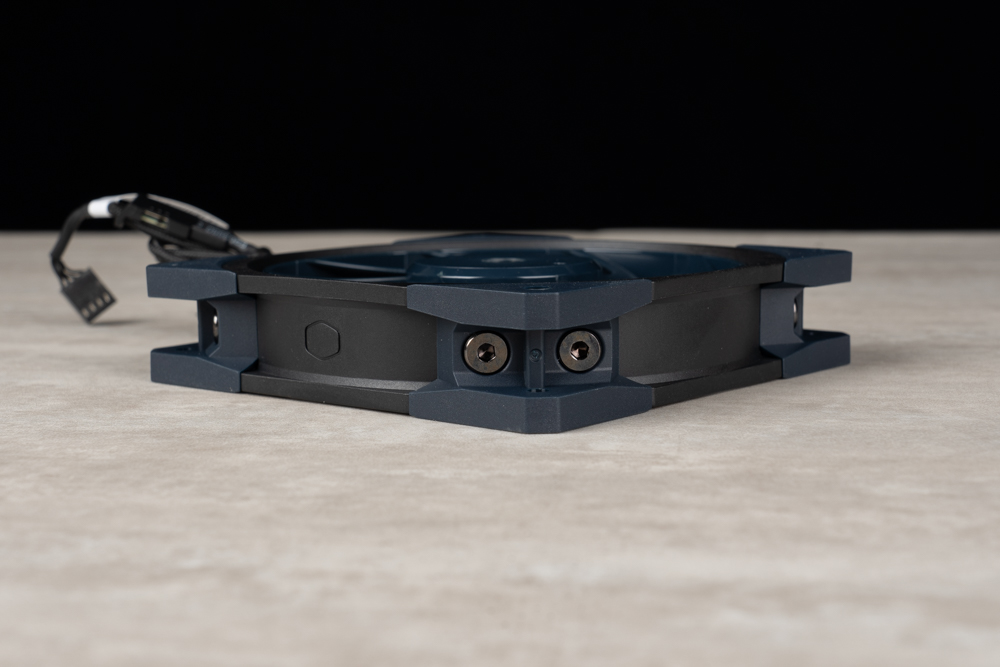
The Mobius 120 OC employs a 4-pin PWM power supply. A “fan speed switch” is located in the middle of the power supply wire, which is encased in a braided outer layer. This three-stage fan speed switch allows for a quick physical transition between the three different speed cap modes of the Mobius 120 OC.
The modes, in descending order of speed, are L/M/H Mode. The top speed limits are 1500/2400/3200 RPM respectively, and all modes support operation at 0 RPM. This flexibility can be combined with the fan curve settings to achieve a supremely quiet 0 dB(A) experience. The switch enables a swift alteration of the speed upper limit without having to access the BIOS or software to manually adjust the fan curve.
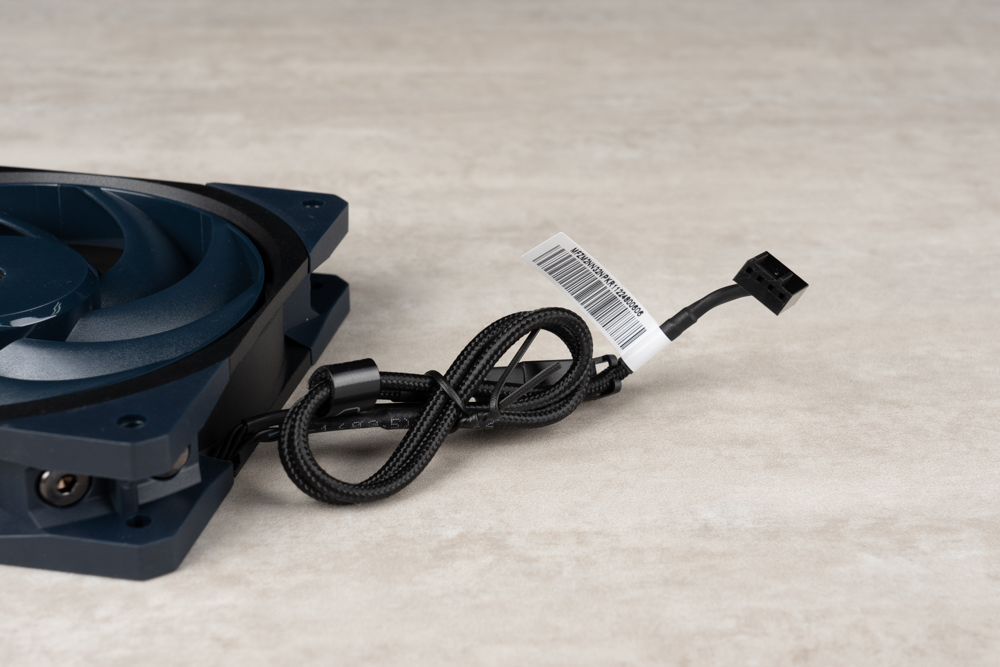


Cooler Master Mobius 120 OC Fan Thermal Performance Test
The Cooler Master Mobius 120 OC fan, in H Mode, achieves a maximum air pressure of 4.75 mmH2O and an airflow volume of 88.1 CFM, with the fan speed reaching up to 3200rpm. For performance testing, it’s paired with an Intel i9 12900K processor, a BIOSTAR Z790 VALKYRIE motherboard, and a Cooler Master MasterLiquid PL360 FLUX. This setup is used to create a barebones test platform, assessing the heat dissipation capabilities of the Mobius 120 OC when functioning as an exhaust fan in a liquid-cooled system.
Test Platform
Processor: Intel Core i9 12900K
Radiator: Cooler Master MasterLiquid PL360 FLUX
Motherboard: BIOSTAR Z790 VALKYRIE
Memory: T-FORCE DELTA RGB DDR5 6200 MT/s 16GBx2
Graphics Card: NVIDIA GeForce RTX 4080 Founders Edition
Operating System: Windows 11 Professional Edition 21H2
power supply: FSP Hydro G PRO ATX3.0 (PCIe5.0) 850W
water-cooling fan: Cooler Master Mobius 120 OC
In this test setup, there are no additional fans for direct air supply, and the fans integrated into the Cooler Master MasterLiquid PL360 FLUX water-cooling system have been replaced with three Mobius 120 OCs. These fans were configured to run at full speed in the BIOS, and AIDA64_CPU temperature tests were performed in all three modes.
Based on the test results, the transition from L Mode (1500 RPM) to M Mode (2400 RPM) resulted in a reduction of heat by 5°C. However, switching from M Mode (2400 RPM) to H Mode (3200 RPM) only resulted in a further decrease of about 2°C. Therefore, the tester recommends utilizing the M Mode as the heat dissipation performance and noise levels appear to be most balanced and acceptable in this setting.
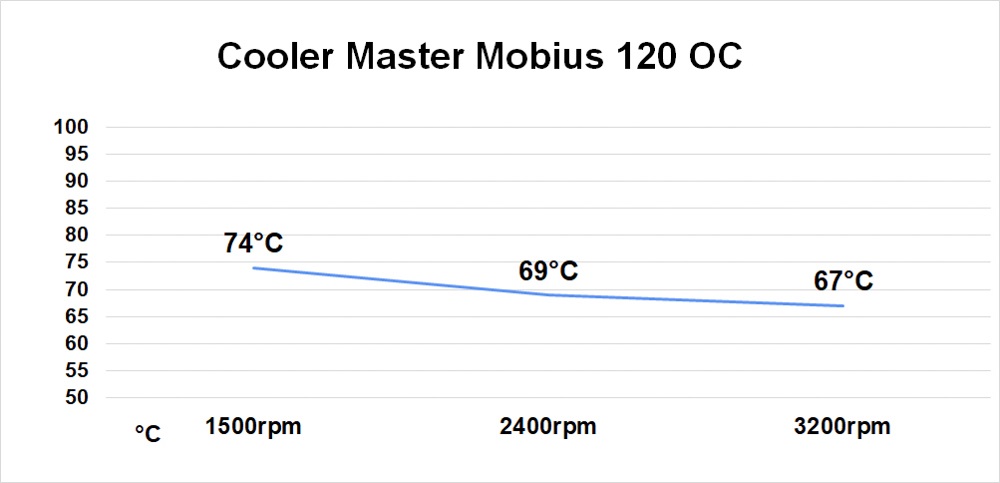
Summary
The Cooler Master Mobius 120 OC is essentially an enhanced version with increased heat dissipation capabilities and a higher speed limit. When compared to the Mobius 120/Mobius 120P ARGB, it offers superior heat dissipation performance, even though its aesthetics and size options are not as diverse as the Mobius 120. The Mobius 120 OC has opted for a more practical direction and positioning.
The physical fan speed switch toggles between three speed modes, allowing users to conveniently set the upper limit to 1500/2400/3200 ±10% RPM. Through these three modes, users can choose the speed that best suits their needs, whether they prefer quiet operation or powerful performance. The Mobius 120 OC is now available for purchase. The original price is NT$1290, but it’s currently on a special offer at NT$890 for your consideration!
If this article is helpful for you, please share this article with your friends on social media. Thank you!
This article is based on the personality of the reviews. You are responsible for fact-checking if the contents are not facts or accurate.
Title: Overclocking evaluation of the Mobius 120 OC fan by Cooler Master